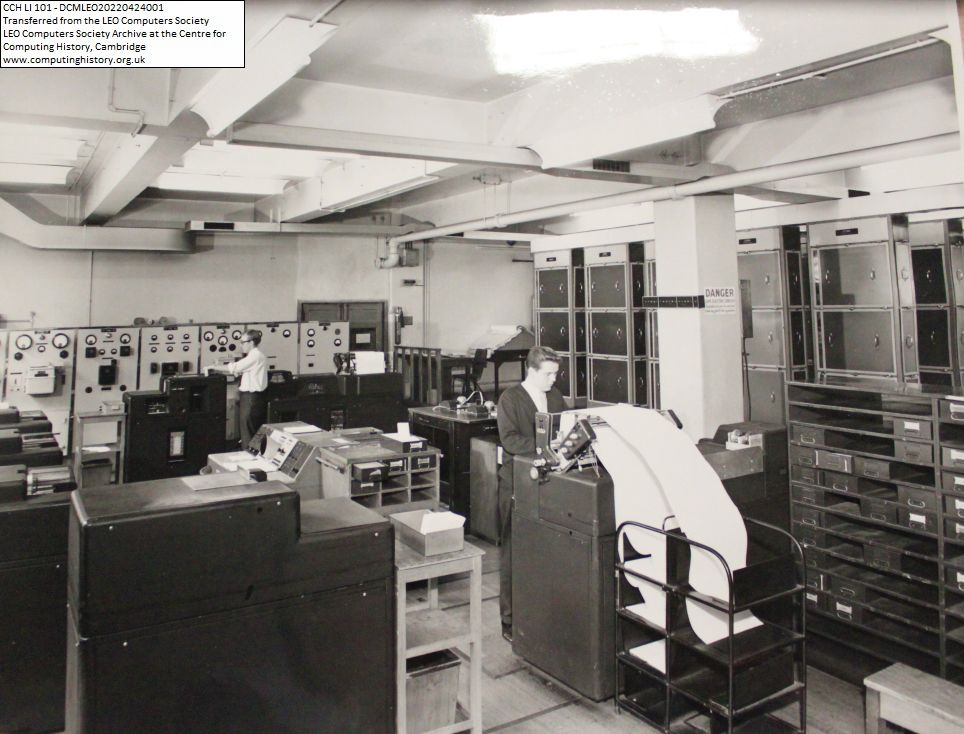Photograph of Brian Skillen, Shift Computer Operator (back), and Ernie Aylott, Engineer (front), working around the power panels and card punches for LEO I.
This image appears in the interactive plan for our Virtual LEO I installation, p87.
Research comments:
Notes about Brian
"I was hired in 1959 straight from Grammar school and I was too young to start work immediately on LEO 1 (I think you had to be 18). I joined LEO in 1960 as a Computer Operator and joined Fred Fielding's shift. I started by preparing and organizing work to be processed. Norman Beasley helped me a lot with those tasks. It was not long before I was a Shift Computer Operator and pressing all the buttons on LEO!"
Notes on the picture
"The photo 87 was taken circa 1964 when I [Brian Skillen] was a Shift Leader. There were three or four of us per shift. This role included scheduling the work, dealing with problems as they occurred ie. determining problems that showed from time to time in the reconciliation programs. Derek Jolly describes this very well on page 34 in the small publication "LEO Remembered". I also made a small and hopefully amusing contribution to this publication. My main responsibilities after 1964 was as a Shift Leader on LEO 2/1. Martin Booth was the Chief Operator.
I agree with you, picture 87 is the last image in its operational state. Although, you will notice that the punched cards cabinets are mainly empty. That was because the cards for those applications had already been transferred to LEO 2/1 as LEO 1 was being phased out. Perhaps I can describe the layout of picture 87 as I remember it:
- at the rear were the power panels;
- to the left were three card readers and behind those against the windows were two card sorters (a perfect location for they were close to card punches as most card output had to be sorted);
- in left foreground one of the two card punches, the other at the back in front of the power panels with me squaring up some more cards;
- in the centre was the operators control panel;
- at the side of the operators control panel was a trolley containing cards/programs of the current job. There were a number of trolleys designed to contain the trays of cards for each application. As one application finished, it was rolled out to the area from this photo was taken and the next one rolled in;
- at centre back, in front of the power panel was one of two Hollerith printers. The other was in the foreground where Ernie Aylott is looking at the results;
- in front of the operators control console were two paper tape readers; and
- centre right in front of the paper tape readers on the pillar was the Order Display Panel." (BS)
DCMLEO20220424001























